734 photos posted.
Roche, Jumper ‘wear test’ Osprey
10-12-2004
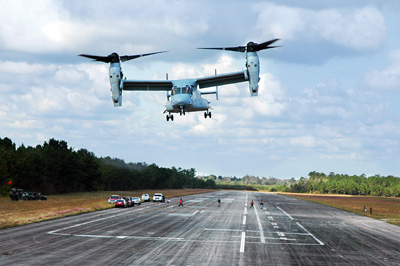
A Marine Corps MV-22 Osprey lifts off a runway here. The MV-22 is a tilt-rotor aircraft. When turned toward the sky, the two wing-mounted rotors on the craft allow for a vertical takeoff like a helicopter. When turned forward, the craft flies as an airplane. Air Force officials plan to purchase as many as 50 CV-22 aircraft.
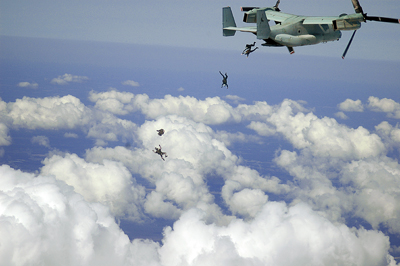
Parachuters jump from the rear of a Marine Corps MV-22 Osprey. The Air Force will buy 50 CV-22 aircraft, a variant of the MV-22, for use in special operations missions.
Humidity is key in keeping cool
08-29-2004
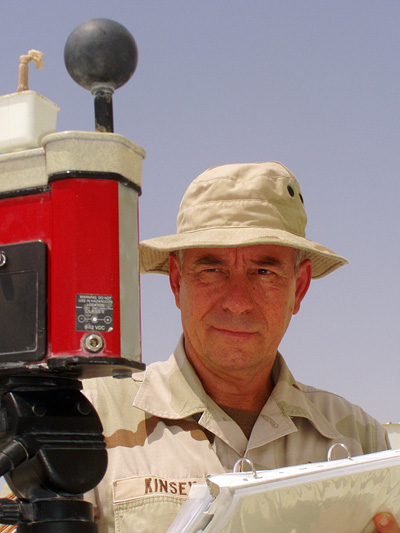
Master Sgt. Jim Kinsey, 379th Expeditionary Medical Group, checks the readings on an environmental monitor. The device measures an "in the shade" temperature, a wet bulb temperature and a radiated heat temperature. The three numbers are used together to calculate a wet bulb globe temperature. That number, weighted mostly towards the humidity reading, is used to set work-rest cycles for Airmen throughout the region. A higher number means a greater chance for heat related illnesses. Sergeant Kinsey is deployed from the Florida Air National Guard's 125th Medical Group, Jacksonville Fla.
Survival equipment keeps pilots afloat
08-15-2004
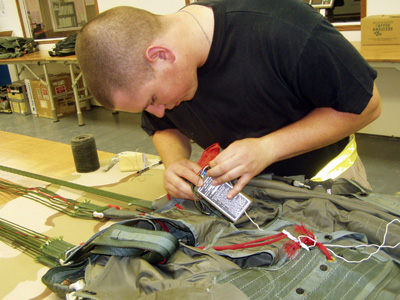
Senior Airman Jesse Struk , 379th Expeditionary Maintenance Squadron, prepares a locator beacon to be inserted into an emergency parachute harness at a forward deployed location. Airman Struck is a survival equipment specialist and is deployed from Dyess Air Force Base, Texas.
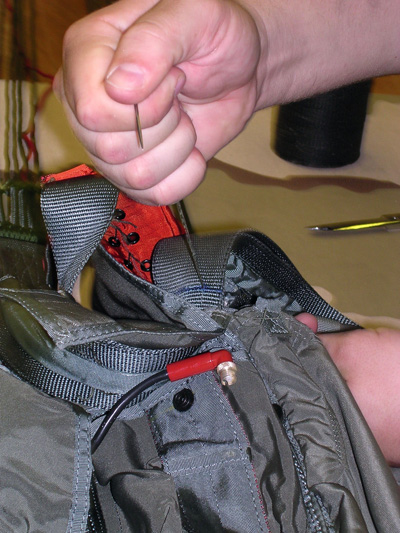
Senior Airman Jesse Struk , 379th Expeditionary Maintenance Squadron, uses a curved sewing needle to prepare an emergency parachute for operational use. Airman Struck is a survival equipment specialist at a forward deployed location. He is deployed from Dyess Air Force Base, Texas.
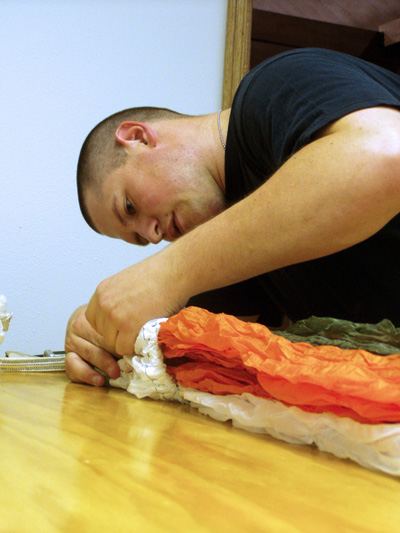
Senior Airman Jesse Struk , 379th Expeditionary Maintenance Squadron, inspects an emergency parachute. As part of the inspection, he checks the lines, the canopy, the pilot chute and the harness for tears, abrasion or other damage. Airman Struck is a survival equipment specialist and is deployed from Dyess Air Force Base, Texas.
Deployed painter makes gray barriers her canvas
08-06-2004
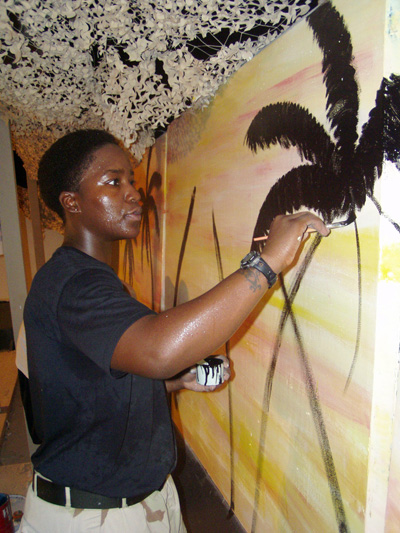
Airman 1st Class Shrett Lettinhand , 379th Expeditionary Security Forces Squadron, works nights during her deployment to paint "Jersey barriers" around the installation. Her largest project to date is a 21-barrier mural at the Point Heritage Club that features an "oasis" theme. When completed, the mural will feature palm trees, camels and 21 squadron logos. Airmen Lettinhand is deployed from Misawa Air Base, Japan.
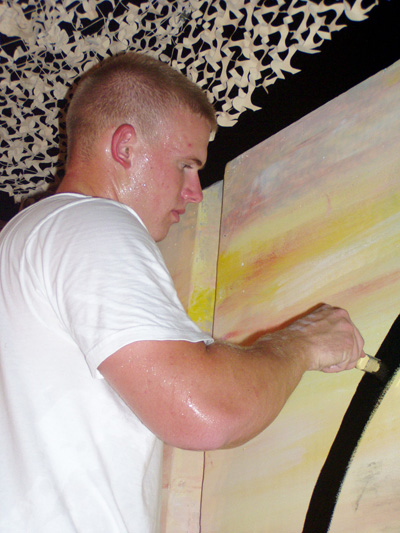
Airman 1st Class Jason Smith, 379th Expeditionary Security Forces Squadron, paints a palm tree on a "Jersey barrier" at the Point Heritage Club. The barrier is just one part of a 21-barrier mural that will feature palm trees, camels and squadron logos. He is deployed from Misawa Air Base, Japan.

Airman 1st Class Shrett Lettinhand , 379th Expeditionary Security Forces Squadron, works nights during her deployment to paint "Jersey barriers" around the installation.
Desert Hawk gives security forces an eye in sky
07-23-2004
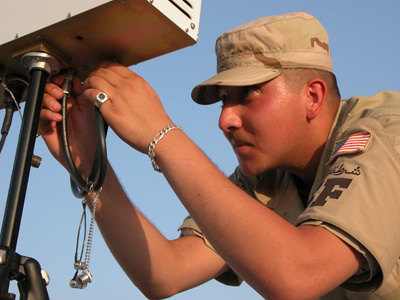
Senior Airman Alexander Jimenez, 379th Security Force Squadron Force Protection Airborne Surveillance System program, makes adjustments to the antenna that controls the Desert Hawk unmanned aerial vehicle. The Desert Hawk is a small foam aircraft with a built in video camera that is used by security forces personnel to monitor the perimeter of an installation. Airman Jimenez is deployed from Spangdahlem Air Base, Germany.
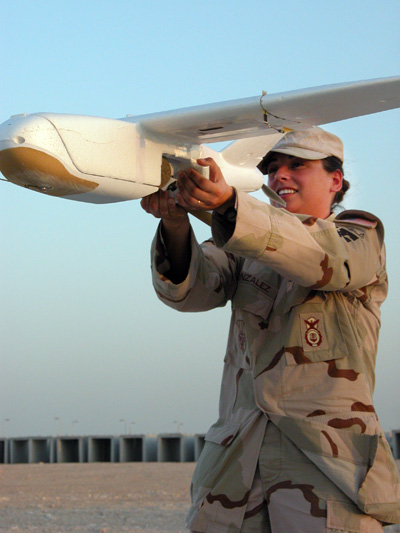
Staff Sgt. Nancy Gonzalez , noncommissioned officer in charge of the 379th Security Force Squadron's Force Protection Airborne Surveillance System program at one forward deployed location, prepares to launch the Desert Hawk unmanned aerial vehicle. The Desert Hawk is a small foam aircraft with a built in video camera that is used by security forces personnel to monitor the perimeter of an installation. The Desert Hawk operators slingshot the craft into the air with a 50 foot bungee cord. Sergeant Gonzalez is deployed from Spangdahlem Air Base, Germany.